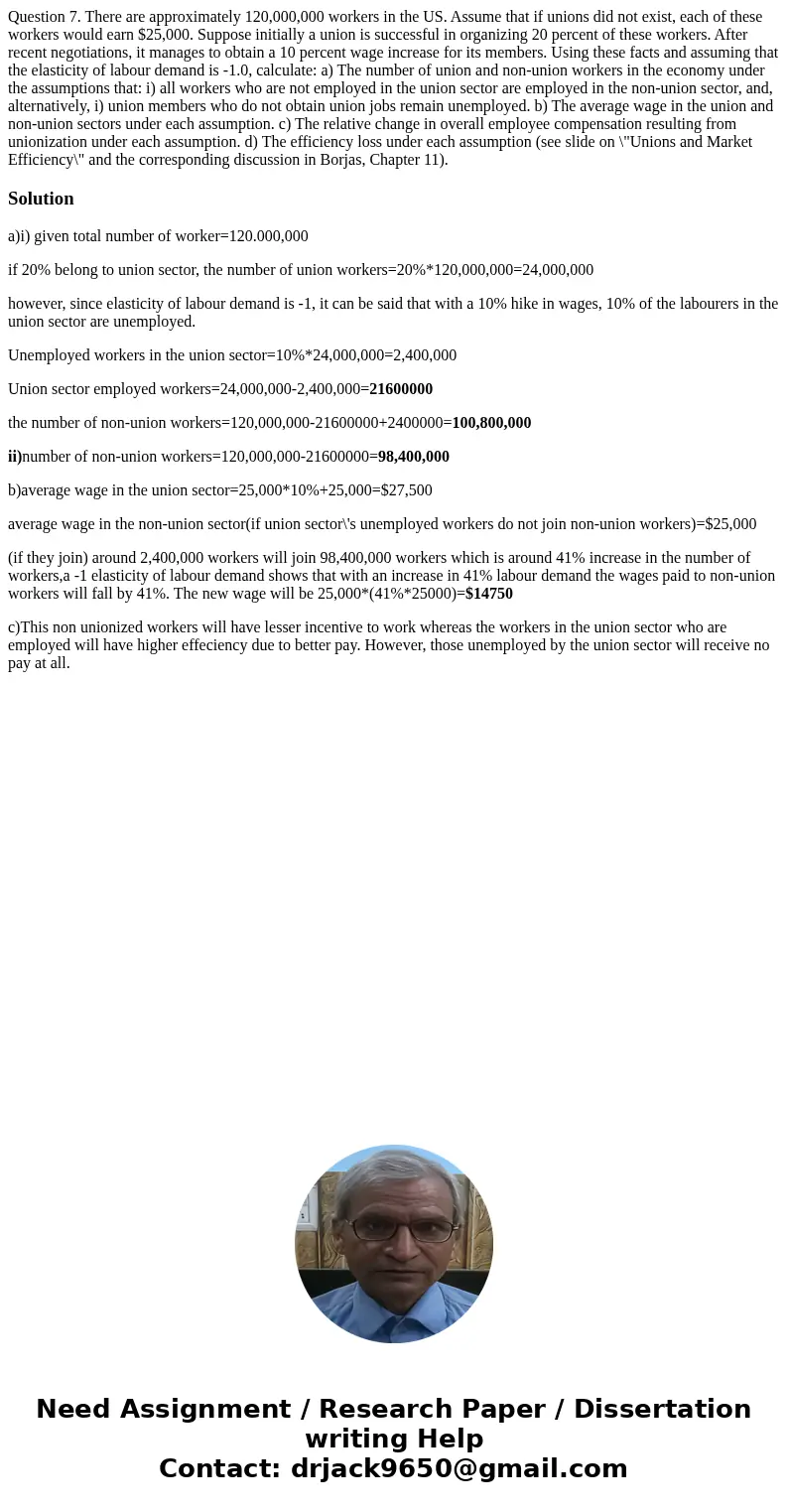Question 7 There are approximately 120000000 workers in the
Solution
a)i) given total number of worker=120.000,000
if 20% belong to union sector, the number of union workers=20%*120,000,000=24,000,000
however, since elasticity of labour demand is -1, it can be said that with a 10% hike in wages, 10% of the labourers in the union sector are unemployed.
Unemployed workers in the union sector=10%*24,000,000=2,400,000
Union sector employed workers=24,000,000-2,400,000=21600000
the number of non-union workers=120,000,000-21600000+2400000=100,800,000
ii)number of non-union workers=120,000,000-21600000=98,400,000
b)average wage in the union sector=25,000*10%+25,000=$27,500
average wage in the non-union sector(if union sector\'s unemployed workers do not join non-union workers)=$25,000
(if they join) around 2,400,000 workers will join 98,400,000 workers which is around 41% increase in the number of workers,a -1 elasticity of labour demand shows that with an increase in 41% labour demand the wages paid to non-union workers will fall by 41%. The new wage will be 25,000*(41%*25000)=$14750
c)This non unionized workers will have lesser incentive to work whereas the workers in the union sector who are employed will have higher effeciency due to better pay. However, those unemployed by the union sector will receive no pay at all.

 Homework Sourse
Homework Sourse